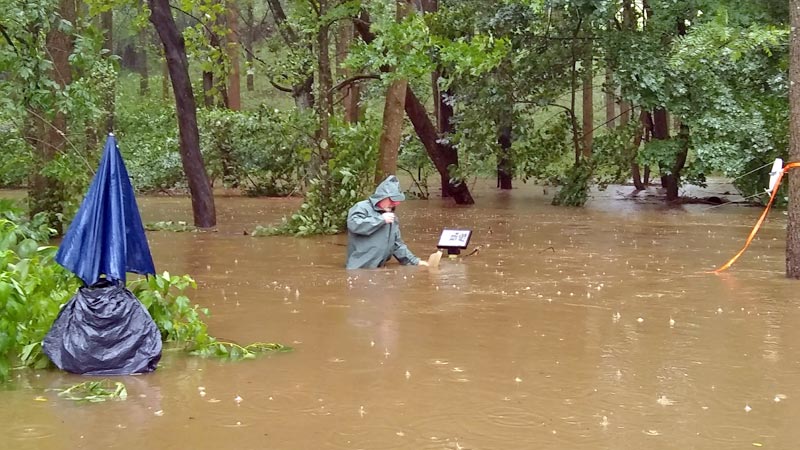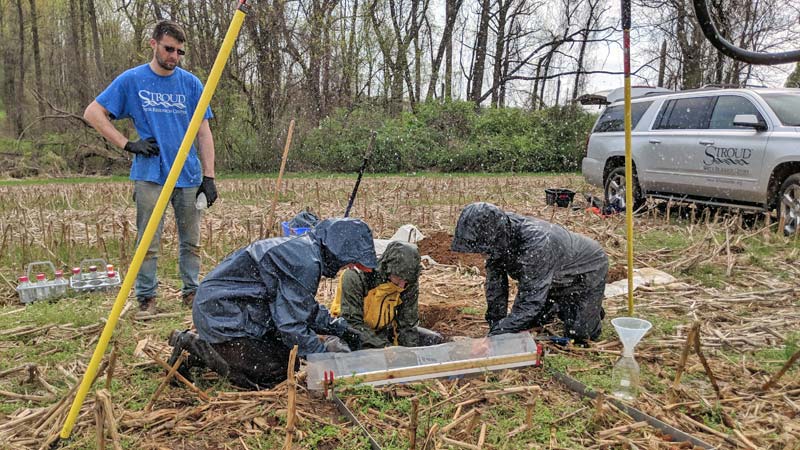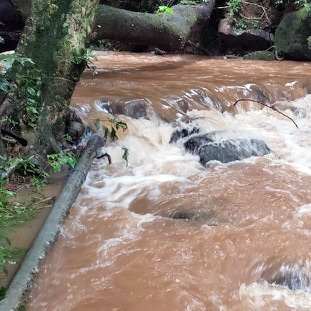Dear Friend of Stroud Water Research Center,
I’m sure you have read the headlines about the incredible number of extreme weather events that have challenged communities around the world, with hurricanes, flooding, mudslides, drought, and fires of epic proportion.
At the Stroud Center, our research on freshwater systems captures how streams and their ecosystems are being impacted. The climate is changing, and it is clear that we need to address the impacts of these changes and take action against the root cause: carbon emissions into our atmosphere.

Our science informs how our watershed restoration team assists landowners and municipal decision-makers to reduce flooding and subsequent erosion by implementing practices, such as creating conservation swales near agriculture fields, enhancing floodplain wetlands, and planting thousands of trees and shrubs as riparian buffers along streams. And, we are measuring the impact of these techniques right in our backyard, in the White Clay Creek headwaters.
Additionally, we are working to improve soil health on farms, because healthy soils will result in improved infiltration of excessive rainfall, greater storage of carbon, and reduced soil erosion. We have found that better soil health results when farmers adopt proper crop rotation, no-till farming, and cover cropping on their fields year-round. Plus, an added benefit of building healthier soils may be a reduced need for fertilizers and some pesticides.

This is truly a “win-win” for protecting water quality, building environmental resiliency, helping reduce greenhouse gases, and conserving our precious soil resources.

We have also been studying tropical streams and rivers in northwestern Costa Rica for decades. This long-term commitment helps us understand how the El Niño/La Niña cycle has changed over time and how the ecosystem has responded.
But we know it is not enough to research the impacts of climate change, increased flooding, rising water temperatures, and the challenges to aquatic life. So, we have implemented solutions on our entire campus to manage excessive rainfall and reduce our environmental footprint by incorporating rain gardens, pervious paving systems, and harvesting roof water for use in our buildings. We have reduced energy demand in our buildings with high-performance windows and insulation, geothermal heating and cooling, water and energy-saving fixtures, and by collecting solar energy.
Your support is essential to our work and allowing us to get information to those who need it. By not having any in-person programs and workshops, we’ve been severely limited in our revenue intake, so your support this year is truly crucial to our work. Please consider making a gift to help us continue this important work.
Thank you for your consideration, and until we can all socialize in person again, I hope you will explore our website to read up on our work.

Yours truly,
David B. Arscott, Ph.D.
Executive Director and Research Scientist



